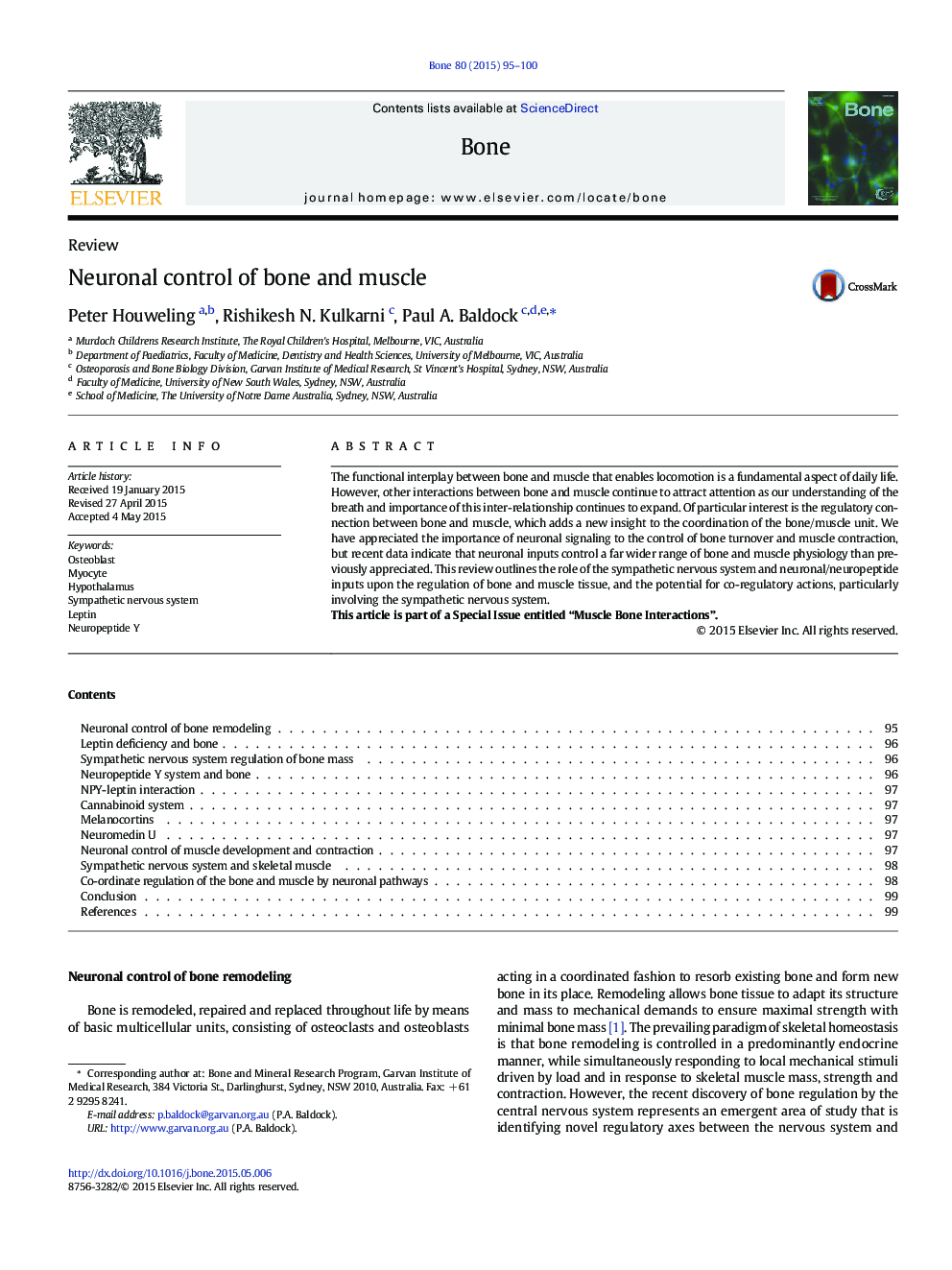| Article ID | Journal | Published Year | Pages | File Type |
|---|---|---|---|---|
| 2779152 | Bone | 2015 | 6 Pages |
•Bone homeostasis is regulated by powerful neural pathways that emanate from the hypothalamus.•The major efferent neural effector pathway to bone is the sympathetic nervous system (SNS).•Muscle is also regulated by the SNS, but in opposition to bone: The SNS is anabolic in muscle, but is anti-anabolic in cancellous bone.•The ob/ob mouse is a well characterised model wherein reduced sympathetic tone increases cancellous bone mass, but reduces muscle mass.•This indicates the existence of co-ordinated regulation of bone and muscle mass through central pathways
The functional interplay between bone and muscle that enables locomotion is a fundamental aspect of daily life. However, other interactions between bone and muscle continue to attract attention as our understanding of the breath and importance of this inter-relationship continues to expand. Of particular interest is the regulatory connection between bone and muscle, which adds a new insight to the coordination of the bone/muscle unit. We have appreciated the importance of neuronal signaling to the control of bone turnover and muscle contraction, but recent data indicate that neuronal inputs control a far wider range of bone and muscle physiology than previously appreciated. This review outlines the role of the sympathetic nervous system and neuronal/neuropeptide inputs upon the regulation of bone and muscle tissue, and the potential for co-regulatory actions, particularly involving the sympathetic nervous system.This article is part of a Special Issue entitled “Muscle Bone Interactions”.
